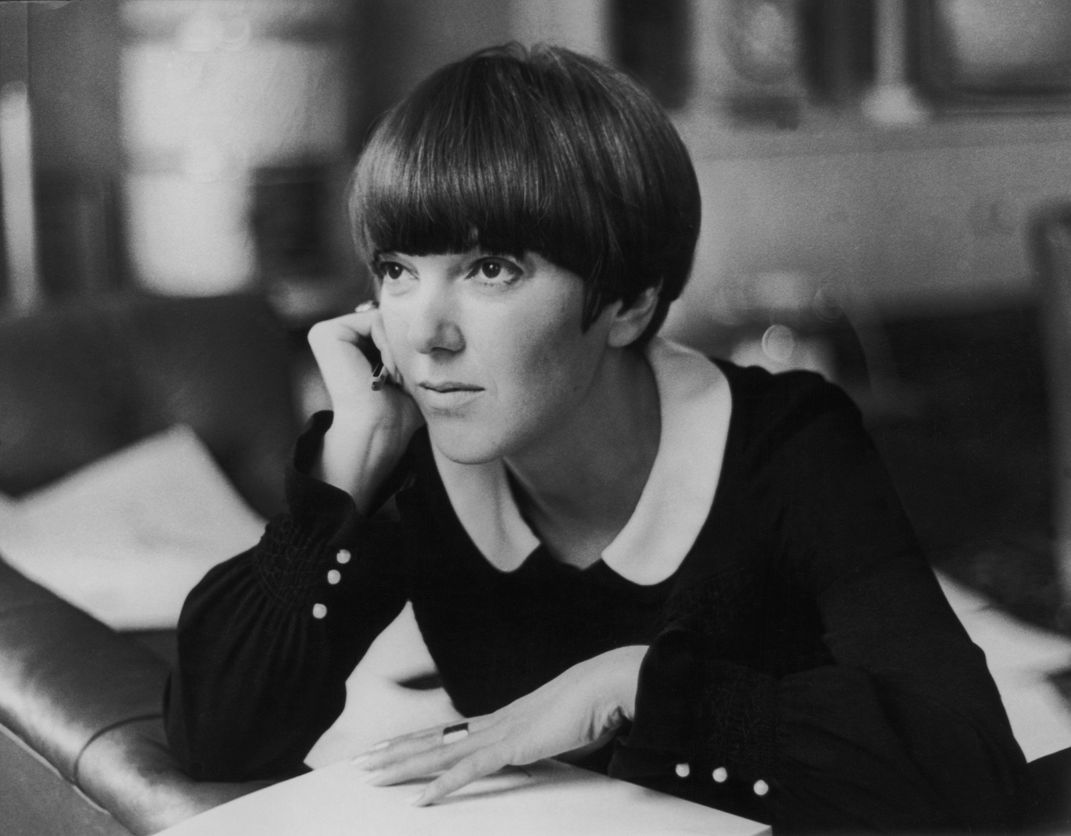The V&A Wants Your Help Locating Vintage Mary Quant Designs
The Welsh fashion designer pioneered high street fashion, popularizing bright patterns, miniskirts and hot pants
/https://tf-cmsv2-smithsonianmag-media.s3.amazonaws.com/filer/59/63/59630a6a-f8d2-43d1-9d52-f3f10398922c/mary_quant_and_models_at_the_quant_afoot_footwear_collection_launch_1967__pa_prints_2008.jpg)
Dame Mary Quant’s youthful designs heralded the rise of London’s Swinging Sixties scene.
To celebrate the fashion icon, an upcoming exhibition at the Victoria and Albert Museum in London will bring together more than 200 artifacts from Quant’s personal archives, V&A holdings and international loans. But to fully capture the zeitgeist of the era, the museum is also looking to the audience that wore and championed her artful street style for personal anecdotes, photographs and clothing made or inspired by the 88-year-old designer.
“We want to hear from women who wore Mary’s radical designs and experienced the appeal of the Mary Quant brand at first-hand,” curator Jenny Lister says in a statement that urges fans “to check attics, cupboards, as well as family photo albums.”
Requested items include one-off designs sold in Quant’s London Bazaar boutiques between 1955 and 1960, experimental PVC clothing designed to offer a shiny “wet” look and 1964 or ’65 works featuring Quant’s signature Peter Pan collars.
Individuals who could not afford Quant's designs at the peak of her fame can contribute, too: The museum wants to exhibit homemade creations inspired by the designer's clothing, The Telegraph’s Helena Horton reports.
“We are really looking for stories behind the designs,” Lister tells Horton. “We've had a lovely collection of clothes from a lady who lived in Malaysia in the early '60s with her husband and bought things through mail order from the shop in Kings Road and shocked everyone in Malaysia where she lived with the striking new designs.”

According to a press release, the V&A’s eponymous exhibition will trace Quant’s journey from 1955, the year the Welsh fashion designer collaborated with future husband Alexander Plunket Greene and photographer Archie McNair to open her first Bazaar boutique, to 1975, the year following her first international retrospective exhibition.
The Guardian’s Maev Kennedy writes that Quant’s designs ranged from the daringly short hemlines of hot pants and miniskirts to the bright colors and patterns of her affordable yet high-fashion designs. Popularized by supermodels including Twiggy, Pattie Boyd and Jean Shrimpton, the garments appealed directly to London’s burgeoning youth culture.
Unlike the restrictive, “mature” styles previously lauded as high couture, Quant’s designs represented “relaxed clothes suited to the actions of normal life,” the V&A notes.
The self-trained designer fashioned scarlet and ginger versions of the school uniforms and dance tunics she’d donned as a child and even touted Victorian undergarments as daywear. In 1957, Quant opened a second Bazaar boutique, and in 1962, she signed a lucrative contract with U.S. retailer J.C. Penney. Four years later, she was named an officer of the Order of the British Empire; in 2015, she was named a Dame Commander.
In a statement, Quant reminisces, “It was a wonderfully exciting time and despite the frenetic, hard work we had enormous fun. We didn’t necessarily realise that what we were creating was pioneering, we were simply too busy relishing all the opportunities and embracing the results before rushing on to the next challenge.”
Individuals who find relevant items hiding in their closets are asked to contact the V&A at [email protected] or share images on social media using the hashtag #WeWantQuant. “Mary Quant” will go on view at the V&A Museum in London next spring, opening April 6, 2019.
/https://tf-cmsv2-smithsonianmag-media.s3.amazonaws.com/accounts/headshot/mellon.png)
/https://tf-cmsv2-smithsonianmag-media.s3.amazonaws.com/accounts/headshot/mellon.png)